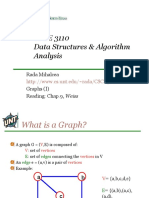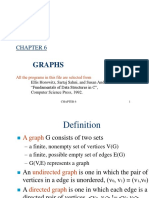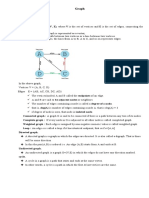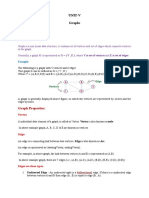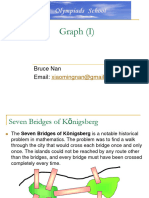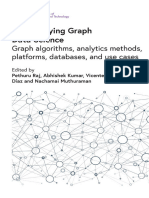0% found this document useful (0 votes)
15 views52 pagesLecture 6 Graph
Lecture 6 covers the fundamentals of graphs, including definitions, types (undirected and directed), and examples of graphs. It discusses concepts such as adjacency, subgraphs, paths, connected components, and graph representations like adjacency matrices and lists. Additionally, it explains traversal methods such as Depth First Search (DFS) and Breadth First Search (BFS), as well as the concept of spanning trees.
Uploaded by
Segni WMCopyright
© © All Rights Reserved
We take content rights seriously. If you suspect this is your content, claim it here.
Available Formats
Download as PDF, TXT or read online on Scribd
0% found this document useful (0 votes)
15 views52 pagesLecture 6 Graph
Lecture 6 covers the fundamentals of graphs, including definitions, types (undirected and directed), and examples of graphs. It discusses concepts such as adjacency, subgraphs, paths, connected components, and graph representations like adjacency matrices and lists. Additionally, it explains traversal methods such as Depth First Search (DFS) and Breadth First Search (BFS), as well as the concept of spanning trees.
Uploaded by
Segni WMCopyright
© © All Rights Reserved
We take content rights seriously. If you suspect this is your content, claim it here.
Available Formats
Download as PDF, TXT or read online on Scribd
/ 52



